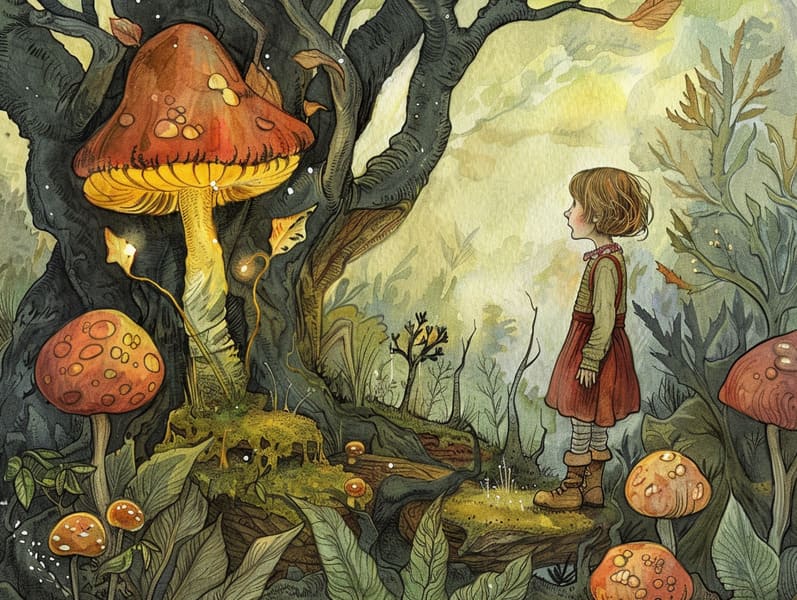The Origins of Vintage Fairy Tales and the Unchanging Radiance.
The Origins of Vintage Fairy Tales and the Unchanging Radiance.
Blog Article

Timeless fairy tales have long histories. These narratives have been passed down from one generation to the next well before they were ever recorded. They developed from a variety of civilizations, including Indigenous traditions. They were initially shared among adults, often carrying themes and messages related to the societal norms and beliefs of the time.
The famous Grimm duo, Jacob and Wilhelm (the Grimm brothers), were among the first to compile and release many of these beloved stories. Their collection, "Grimm's Folk Tales," included classics like "The True Bride," "Little Brother and Little Sister," and "Snow White," which have since become essentials in the world of famous fairy tales. Similarly, H. C. Andersen's charming tales, such as "The Story of the Little Mermaid," and "The Duckling's Story," have captured hearts worldwide, ensuring their place in the pantheon of famous fairy tales.
Despite their historical roots, these tales remain as applicable as ever, especially as children's night stories. These delightful tales are now available in diverse formats, including artistically illustrated books, fantastical animations, and online storybooks.
Their persistent charm can be connected to several delightful features:
Vital Lessons: Timeless fairy tales often offer important moral lessons. Tales like "The Story of the Boy Who Cried Wolf" teach the significance of sincerity, while "The Tale of the Tortoise and the Hare" underline the traits of determination and humbleness. These narratives offer the young clear distinctions between ethical and unethical, building their moral compass in a gentle yet significant way.
Empathy and Awareness: Classic fairy tales frequently feature heroes facing struggles and tests, fostering young listeners to understand with their struggles and applaud their triumphs. For instance, "The Tale of Beauty and the Beast" emphasizes the importance of appreciating inner worth to realize the true being of a character, nurturing kindness and discernment.
Cultural Knowledge: Many fairy tales are infused with the cultural contexts from which they originated. Reading these fairy tales can provide informative snapshots into different backgrounds, building a sense of global appreciation and respect.
Imagination and Innovation: The imaginative elements in traditional fairy tales—enchanted objects—unleash children’s imaginations. These tales guide readers to magical realms, enhancing inventive thinking and a sense of mystery that stays a lifetime.
Classic fairy tales are not only fantastical but also pedagogical. They serve as bewitching tools in fostering various cognitive and emotional skills in little ones. When fairy tales are recited, they foster communication skills by showing new terms and meanings and intricate sentence structures. This practice also nurtures hearing perception and attentiveness, as young ones track the narrative, enthusiastic to see what happens next.
Furthermore, discussing the themes and characters of classic fairy tales can promote evaluative skills and logical thinking. Kids are guided to identify patterns, predict happenings, and grasp cause and effect. These discussions also facilitate the young reveal their thoughts and feelings, nurturing their emotional intelligence.
In today’s information age, the proliferation of web-based fairy tales has made these narratives more acquirable than ever. Web-based platforms and applications provide extensive collections of old fairy tales that can be perused or played anytime, anywhere. Fairy tales recited are particularly widespread, offering an immersive method for the young to enjoy these whimsical stories. Spoken stories and read-out-loud videos take characters and settings to life, often accompanied website by bewitching harmonies and tunes that intensify the storytelling journey.
The timeless charm of old fairy tales lies in their ability to modify to present days while keeping hold of their central values. Contemporary renditions of these narratives often incorporate more different figures and modern settings, making them relevant to today’s audience. However, the key lessons of valour, benevolence, and fair play remain unchanged, continuing to impact young listeners of all ages.
Old fairy tales also offer a sense of peace and predictability. They disclose a well-ordered narrative with a transparent beginning, middle, and end, often concluding with the settlement of conflicts and the triumph of goodness over badness. This reliability can be easing for young ones, gifting a sense of consistency in an fluctuating world.
Traditional fairy tales continue to delight and guide new generations, maintaining their enchantment and value in modern society. As bedtime stories for kids, they make accessible a perfect blend of delight and instruction, backing moral values, empathy, and creativity. The accessibility of internet fairy tales and the favor of fairy tales spoken secure that these traditional fairy tales remain within reach to new generations.
By maintaining and imparting these tales, we continue to commemorate the rich tapestry of tales and cultural heritage. Whether you are perusing a beautifully illustrated book, experiencing a internet collection, or playing an sound book, the grandeur of traditional fairy tales is always within reach. These fairy tales point out of the unchanging ability of fairy tales and its ability to draw us together across epochs and places.
Be it you are perusing a gorgeously illustrated book, browsing a web-based library, or listening through an narrated book, the grace of famous fairy tales is always within reach.
These stories highlight of the endless ability of stories and its ability to hold us together across eras and regions, casting a charm that delights and instructs alike.